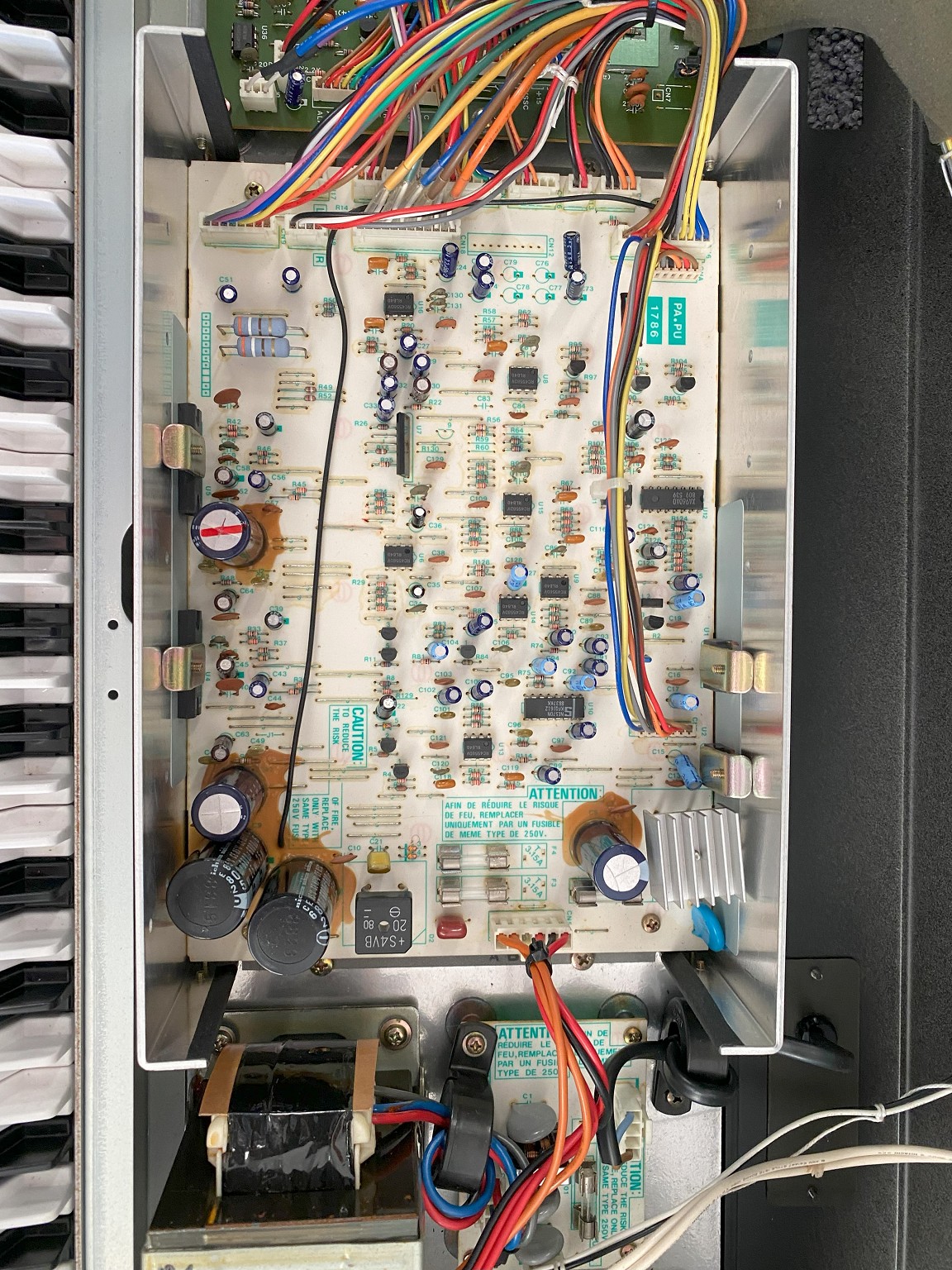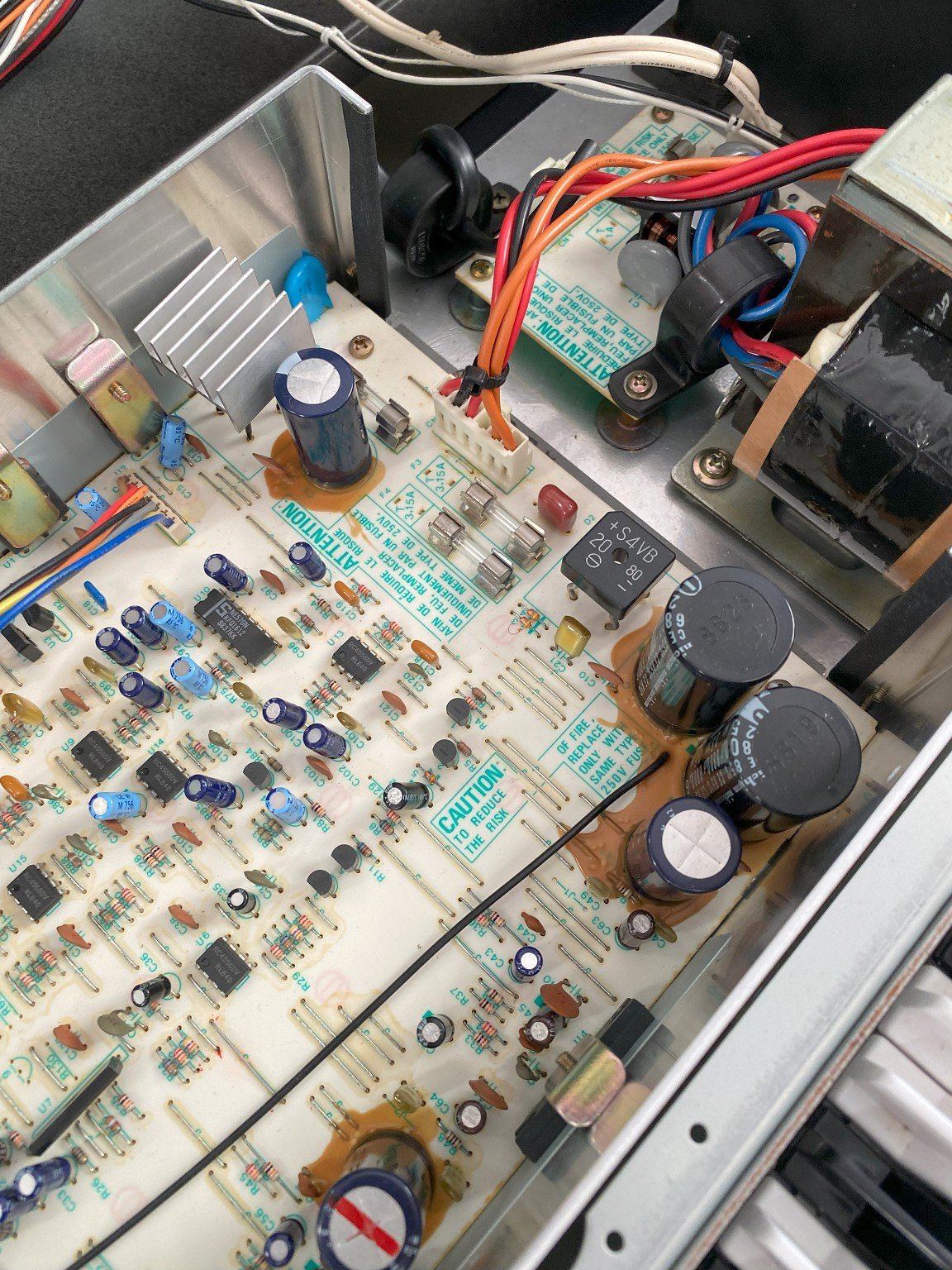My 7yo is learning the piano and so her grandmother gave her a Yamaha CVP-6 Clavinova that she got from a friend, and has been sitting in a garage for a wee while. It appears to be quite an old model (1980s?) but by all accounts it was fully working when it was put into storage.
When we got it inside and turned it on, we discovered that a very specific set of keys didn't work. They are the same keys in each octave - 2 white, and 1 black. Then, weirdly, I came back later (a day or so) and turned it on and the keys worked - briefly - before stopping again.
Yesterday I got around to opening it up to see if this was a dust situation. I managed to pull the cover off to expose the circuit boards and found what I think might be capacitor leakage.


I'm by no means an expert on capacitors, but I've read a little about the issues with leaky capacitors in retro computers and the damage they can do to the motherboard. Is this what's happened here? And if there are any piano experts in the forum, would this likely explain the selective silence from some keys?

